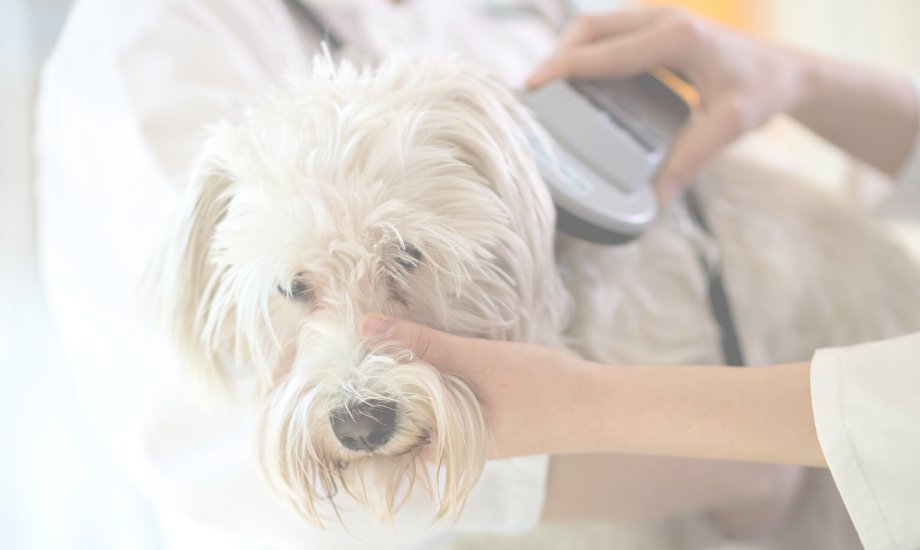Microchips: they may be small, but they are mighty! They use the same technology as you would find at the grocery store that lets the register know when a barcode is scanned what item you’re purchasing . It’s as small as a grain of rice. But what does it do, and should your pet have one? Continue reading to get the low-down on all things microchipping!
What Is It?
A microchip is a radio-frequency chip stored in a pet-safe, bio-glass capsule. Microchips don’t require a power source, and transmit an identification number to a scanner. They are administered similarly to a vaccine and inserted right under your pet’s skin using a needle.. However, the needle tends to be slightly larger than those used for vaccines, so it is often recommended that they be implanted during surgery when your pet is already under anesthetic to minimize any discomfort. They can be implanted on both dogs and cats.
What Is The Purpose Of A Microchip?
Microchips are an important tool to help find lost pets. Statistics show that ⅓ of pets will be lost at some point in their lifetime. Although a collar with an ID tag is always a good idea, these can fall off or even be removed by a thief. Since a microchip is implanted under the skin, it can only be removed surgically. A scanner is used to read the ID number associated with the microchip, and it is then searched in a database. There are a variety of companies that manufacture microchips and have registries, but universal databases such as the American Animal Hospital Association microchip lookup tool will alert you to what registry the number is associated with. The veterinary clinic or shelter that scanned your dog’s microchip can then call the appropriate company, who will contact the owner on file. This is why it is very important to always keep your pet’s microchip information up to date!
Can A Microchip Track My Dog?
Unfortunately no. The only information stored on a microchip is the identification number, which is then connected to your information as the owner in the microchip registry. There are GPS and bluetooth tracking devices that you can keep on your dog’s collar if your pup has a tendency to be an escape artist! These allow you to follow your pup’s location on an app on your phone, but they do have limited signal distances. There are also some concerns that these devices are constantly emitting electromagnetic signals, and EMFs (electric and magnetic fields) may cause health issues in humans and dogs alike.
Are There Risks?
There are some minor risks to your pet, but many experts recommend that these outweigh the risks of not being reunited with your dog should they get lost. There have been unproven studies linking microchips to cancer as tumours have (in rare instances) been found surrounding the microchip.
Injury from microchip implantation is also rare, but some pets may have temporary inflammation at the injection site. The most common side effect is that the microchip migrates. Some dogs now have a microchip found at their shoulder rather than on their back between their shoulder blades. This is why it is important to have your veterinary team scan your dog for their microchip at each visit, or at least annually. They can then track if the chip has migrated, and ensure it is never unreadable. Microchip companies have started to utilize anti-migration technology to limit this from happening.
Are There Alternatives?
You can use a GPS tracker but it is best used along with a microchip rather than instead of. Trackers can be removed, run out of battery power, or lose signal. Previously, dogs used to be tattooed with an identification number, but this method has its cons as well! The area must be shaved and anesthetic used, tattoos can fade and become unreadable, and the clinic, shelter, or animal control officer who finds your dog needs to know to look for one. Some are placed on their belly or inner thigh while other dogs are tattooed inside their right ear. Locating an owner based on a tattoo can be more difficult as well, as there is no centralized look up and imported dogs will sometimes have a different tattoo convention. Microchipping remains the most reliable method for being reunited with your pup.
The most important thing to remember when microchipping your pet is to keep your contact information with the registry up to date! If your phone number on file is out of service, they will not be able to contact you if your furry friend is found and secured. It’s recommended to use a microchip in addition to a collar and ID tag, and a GPS tracker for those Houdini-type pets. And don’t forget, it’s never too late to get your pet microchipped! If your pup is not going to be under anesthetic, you can always ask your veterinarian to apply a small amount of topical numbing agent so they won’t be uncomfortable.





